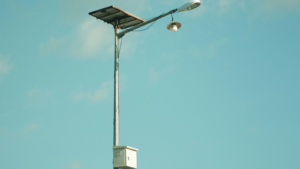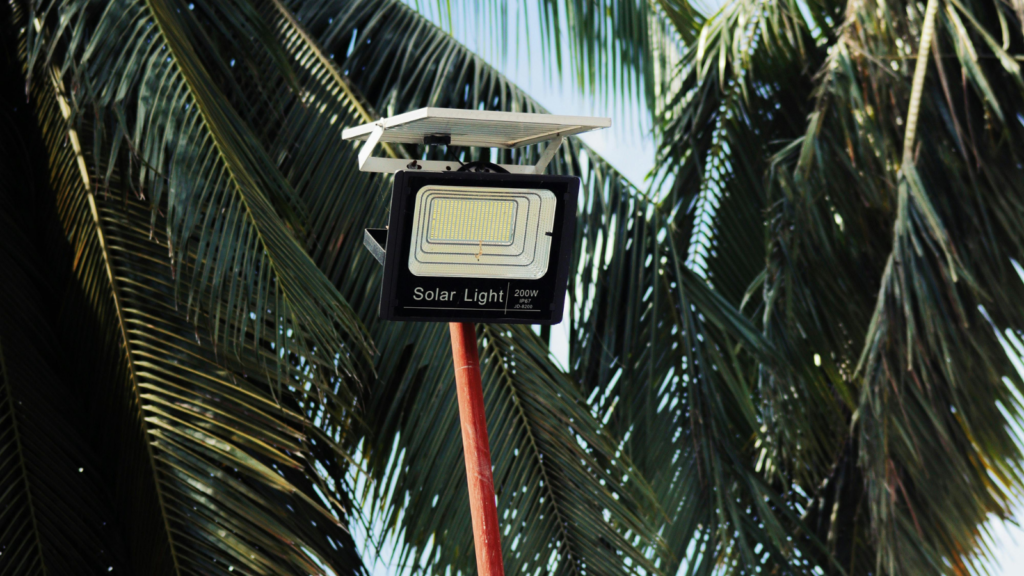”
Key Takeaways
- Enhanced Energy Production: Pole mounted solar panels significantly improve energy capture by minimizing shading and allowing for optimal panel orientation, potentially increasing energy output by 20% to 30%.
- Space Efficiency: These systems maximize land use by elevating panels, freeing up ground space for other activities, making them particularly suitable for urban settings with limited installation opportunities.
- Maintenance Accessibility: Elevated installations provide easier access for cleaning and inspections, facilitating quicker maintenance and ensuring optimal functionality throughout the system’s lifespan.
- Types of Systems: There are two primary types—fixed and adjustable pole mounted systems—each offering unique benefits based on specific geographic conditions and energy needs.
- Installation Considerations: Proper site assessment, understanding local zoning laws, and obtaining necessary permits are crucial for a successful and compliant installation of pole mounted solar panels.
- Cost Implications: While upfront installation costs may be higher than traditional systems, long-term savings, incentives, and increased property value can lead to a favorable return on investment.
As the demand for renewable energy grows, innovative solutions like pole mounted solar panels are gaining traction. These systems offer a unique way to harness solar power while maximizing efficiency and space. By elevating solar panels off the ground, they can capture sunlight more effectively and reduce shading from nearby structures or trees.
Pole mounted solar panels are ideal for residential and commercial properties alike. They provide flexibility in installation and can be adjusted easily to optimize energy production. With their growing popularity, understanding the benefits and considerations of these systems can help homeowners and businesses make informed decisions about their energy needs.
Pole Mounted Solar Panels
Pole mounted solar panels utilize vertical supports to elevate solar arrays above ground level. This design increases exposure to sunlight while decreasing shading, which can adversely affect energy efficiency. These systems accommodate various terrains and work well in applications where land space is limited.
Key components of pole mounted systems include the pole, solar panels, mounts, and wiring. The pole, often made of durable materials like steel or aluminum, provides structural support. Features of the panels include photovoltaic cells that convert sunlight into electricity. The mounts secure the panels in place and allow for angle adjustments that enhance solar gain.
Several advantages accompany the installation of pole mounted solar panels. Increased energy production occurs due to optimal positioning towards the sun, reducing potential shading from surrounding structures or vegetation. Furthermore, maintenance becomes easier with elevated panels, as debris and snow are less likely to accumulate.

Nonetheless, certain considerations exist. Installation costs for pole mounted solar panels can be higher than ground-mounted systems due to the additional materials and labor. Local zoning regulations may also impact installation options. Proper planning and consultation with professionals ensure that homeowners and businesses optimize energy generation while complying with legal requirements.
Overall, the versatility and efficiency of pole mounted solar panels present a compelling option for those seeking renewable energy solutions.
Benefits of Pole Mounted Solar Panels
Pole mounted solar panels provide numerous advantages that enhance energy efficiency and optimize installation. Their elevated structure contributes to increased energy production and streamlined maintenance.
Increased Energy Capture
Increased energy capture is a primary benefit of pole mounted solar panels. Elevation improves sunlight exposure by minimizing shading from buildings, trees, and other obstructions. Adjustability in angle allows users to optimize panel orientation for seasonal variations, maximizing solar gain throughout the year. Data indicates that properly positioned pole mounted systems can produce 20% to 30% more energy compared to traditional rooftop panels.
Space Efficiency
Space efficiency enhances the appeal of pole mounted solar panels, especially in limited areas. Vertical installation frees up ground space for other uses, such as gardening or recreational activities. This configuration is ideal for urban environments or properties with restricted rooftop access. Additionally, ground-mounted systems can accommodate multiple pole configurations, optimizing energy capture without taking up excessive land.
Easier Maintenance
Easier maintenance is another significant advantage of pole mounted solar panels. Elevated installations simplify access, reducing the time and effort required for cleaning and inspections. Routine maintenance tasks can often be accomplished without specialized equipment, allowing for quick performance checks to ensure optimal functionality. Improved accessibility also facilitates timely repairs, which are essential for maintaining energy efficiency.
Types of Pole Mounted Solar Panels
Pole mounted solar panels come in two primary types: fixed pole mounted systems and adjustable pole mounted systems. Each type offers unique features catering to various energy needs and installation scenarios.
Fixed Pole Mounted Systems
Fixed pole mounted systems consist of solar panels affixed at a predetermined angle and position. This design simplifies installation and reduces costs compared to adjustable systems. Fixed systems often utilize a set tilt angle optimized for specific geographic locations. By maximizing sun exposure throughout the day, these systems can enhance energy production. They’re best suited for areas with consistent sunlight patterns, delivering reliable performance without the need for continuous adjustments.
Adjustable Pole Mounted Systems
Adjustable pole mounted systems incorporate mechanisms that allow for the alteration of panel angles to optimize sunlight capture. These systems enable users to modify the tilt based on seasonal changes or varying sun paths. Generally, adjustable systems can increase energy output by 15% to 25% compared to fixed installations. These systems suit locations with diverse weather patterns, maximizing energy production throughout the year. Adjustability enhances flexibility, making these systems ideal for users seeking to optimize performance based on real-time conditions.
Installation Considerations for Pole Mounted Solar Panels
Installation of pole mounted solar panels requires careful planning and assessment of various factors to ensure optimal performance and compliance with local regulations.
Site Assessment
Site assessment is crucial for effective installation of pole mounted solar panels. Factors to consider include:
- Orientation: Position panels towards the south for maximum sunlight exposure in the Northern Hemisphere, enhancing energy capture.
- Shade Analysis: Identify nearby trees, buildings, or other obstructions that may cast shadows, as even minimal shading can significantly reduce efficiency.
- Soil Conditions: Evaluate soil type and stability for proper pole installation; firm, well-draining soil provides adequate support.
- Accessibility: Ensure the site allows for easy access during installation and maintenance, improving long-term functionality.
Permitting and Regulations
Permitting and regulations can impact the installation of pole mounted solar panels. Key points include:
- Local Zoning Laws: Check local zoning laws, as some jurisdictions have restrictions on the height and placement of solar structures.
- Building Permits: Obtain necessary building permits to comply with local regulations, ensuring legality and safety of the installation.
- Interconnection Agreements: Familiarize with interconnection agreements required by utility companies to connect solar systems to the grid.
- Homeowners Association (HOA) Guidelines: Review any relevant HOA guidelines, as these can affect aesthetics and installation practices within community settings.
Understanding these considerations aids in a smoother installation process, supports compliance with regulations, and maximizes energy production of pole mounted solar panels.
Cost Analysis of Pole Mounted Solar Panels
Cost considerations play a significant role in the decision-making process for installing pole mounted solar panels. Initial expenses include equipment, installation, and site preparation costs.
Equipment Costs
- Solar Panels: Typical costs range from $0.70 to $3.00 per watt, depending on the panel brand and efficiency ratings.
- Mounting Hardware: Fixed systems generally cost between $100 to $300, while adjustable mounts can range from $300 to $600.
- Inverters: High-quality inverters may cost between $100 to $500, influencing overall system efficiency.
Installation Costs
- Labor: Hiring professional installers usually adds $1,000 to $3,000, depending on the complexity of the installation.
- Preparation: Site assessment and modification can add another $500 to $2,000, depending on soil conditions and accessibility.
Long-Term Financial Considerations

- Energy Savings: Pole mounted systems can result in electricity savings of $300 to $1,000 annually, depending on energy consumption and local rates.
- Incentives: Federal and state incentives can offset installation costs. For example, the Federal Investment Tax Credit (ITC) offers a 26% tax credit on the total system cost until the end of 2023.
- Payback Period: Typical payback periods for pole mounted systems range from 5 to 10 years, influenced by utility rates and system size.
- Increased Property Value: Installing these systems can increase property values by 3% to 4%, making them an attractive investment over time.
The cost analysis reveals key financial dynamics regarding pole mounted solar panel setups. Understanding expenses alongside potential savings informs better energy decisions for both residential and commercial applications.
Conclusion
Pole mounted solar panels represent a forward-thinking approach to harnessing renewable energy. Their ability to maximize sunlight exposure while simplifying maintenance makes them an appealing choice for many property owners. As more people seek sustainable energy solutions, these systems offer flexibility and efficiency that traditional rooftop panels may not provide.
Investing in pole mounted solar panels not only enhances energy production but can also lead to significant long-term savings. Homeowners and businesses alike can benefit from the increased property value and potential incentives available. By carefully considering installation factors and local regulations, they can make informed decisions that align with their energy goals.
“

